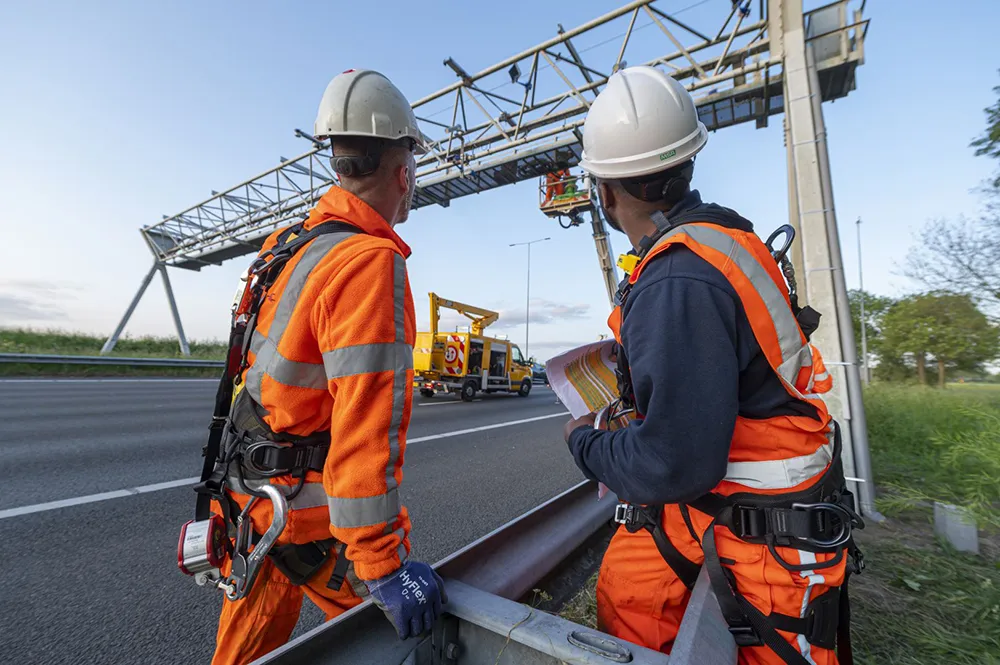Researchers at Virginia Tech, Penn State University, and 12 industry partners are collaborating on a US$1.2 million National Science Foundation-funded project to integrate sensors into car tyres, with the aim of providing information on the vehicle’s speed and road conditions.
Saied Taheri, an associate professor of mechanical engineering in Virginia Tech’s College of Engineering and the director of the Center for Tire Research (CenTiRe), is the project’s lead investigator.
Taheri has been working for
January 15, 2016
Read time: 3 mins
Researchers at 5593 Virginia Tech, Penn State University, and 12 industry partners are collaborating on a US$1.2 million National Science Foundation-funded project to integrate sensors into car tyres, with the aim of providing information on the vehicle’s speed and road conditions.
Saied Taheri, an associate professor of mechanical engineering in Virginia Tech’s College of Engineering and the director of the Center for Tire Research (CenTiRe), is the project’s lead investigator.
Taheri has been working for several years on gathering data from tyres using an attached sensor; the new project will expand on that research by incorporating multiple piezoelectric sensors into each tire through direct deposition techniques. With many more data points available per revolution, researchers can extract systematic information.
The ceramic sensors will gather information about road conditions and the health of the tyre and transmit that information wirelessly to the car’s control systems. The team will develop new manufacturing techniques for direct sensor integration into the tyres.
“That gives us a much broader way of looking at those interactions between the tyre and the road,” Taheri explained. “All of these parameters that we’ve been assessing with one sensor, we will be able to assess much more accurately.”
Piezoelectric sensors convert physical inputs, like changes in pressure, temperature, and acceleration, to electrical signals. In a tyre, those signals could convey information about the friction between the tyre and the road, the car’s acceleration, and the tire’s air pressure and structural integrity.
If this data could be transmitted wirelessly to the car’s computer, the car’s existing control systems could automatically adapt to maximise safety.
The Broadband Wireless Access and Applications Center is collaborating on the project to develop the wireless technology; the Center for Energy Harvesting Materials and Systems is also involved, to come up with a way to use the tyre’s own motion to power the sensors and transmission systems.
The team is also investigating printing piezoelectric sensors on the car’s seatbelts, where they could measure the driver’s vital signs and movements, potentially detecting a distracted or ill driver before he causes an accident.
The safety benefits would extend beyond the sensor-enabled vehicle itself: the wireless systems transmitting data from the car’s tires to its computer could share data with other vehicles (V2V) and with the broader communications infrastructure (V2I), allowing additional users to access this information and dramatically increasing the potential impact.
Shashank Priya, a professor of mechanical engineering and the Faculty Director of Sustainable Energy at the Institute for Critical Technology and Applied Science, assembled the project team.
“The interdisciplinary team comprises three National Science Foundation Industry/University Cooperative Research Centers and one Engineering Research Center,” Priya said. “They bring together the right expertise and background to address a comprehensive set of technical barriers and make a fundamental breakthrough in developing intelligent tire systems.”
Saied Taheri, an associate professor of mechanical engineering in Virginia Tech’s College of Engineering and the director of the Center for Tire Research (CenTiRe), is the project’s lead investigator.
Taheri has been working for several years on gathering data from tyres using an attached sensor; the new project will expand on that research by incorporating multiple piezoelectric sensors into each tire through direct deposition techniques. With many more data points available per revolution, researchers can extract systematic information.
The ceramic sensors will gather information about road conditions and the health of the tyre and transmit that information wirelessly to the car’s control systems. The team will develop new manufacturing techniques for direct sensor integration into the tyres.
“That gives us a much broader way of looking at those interactions between the tyre and the road,” Taheri explained. “All of these parameters that we’ve been assessing with one sensor, we will be able to assess much more accurately.”
Piezoelectric sensors convert physical inputs, like changes in pressure, temperature, and acceleration, to electrical signals. In a tyre, those signals could convey information about the friction between the tyre and the road, the car’s acceleration, and the tire’s air pressure and structural integrity.
If this data could be transmitted wirelessly to the car’s computer, the car’s existing control systems could automatically adapt to maximise safety.
The Broadband Wireless Access and Applications Center is collaborating on the project to develop the wireless technology; the Center for Energy Harvesting Materials and Systems is also involved, to come up with a way to use the tyre’s own motion to power the sensors and transmission systems.
The team is also investigating printing piezoelectric sensors on the car’s seatbelts, where they could measure the driver’s vital signs and movements, potentially detecting a distracted or ill driver before he causes an accident.
The safety benefits would extend beyond the sensor-enabled vehicle itself: the wireless systems transmitting data from the car’s tires to its computer could share data with other vehicles (V2V) and with the broader communications infrastructure (V2I), allowing additional users to access this information and dramatically increasing the potential impact.
Shashank Priya, a professor of mechanical engineering and the Faculty Director of Sustainable Energy at the Institute for Critical Technology and Applied Science, assembled the project team.
“The interdisciplinary team comprises three National Science Foundation Industry/University Cooperative Research Centers and one Engineering Research Center,” Priya said. “They bring together the right expertise and background to address a comprehensive set of technical barriers and make a fundamental breakthrough in developing intelligent tire systems.”









